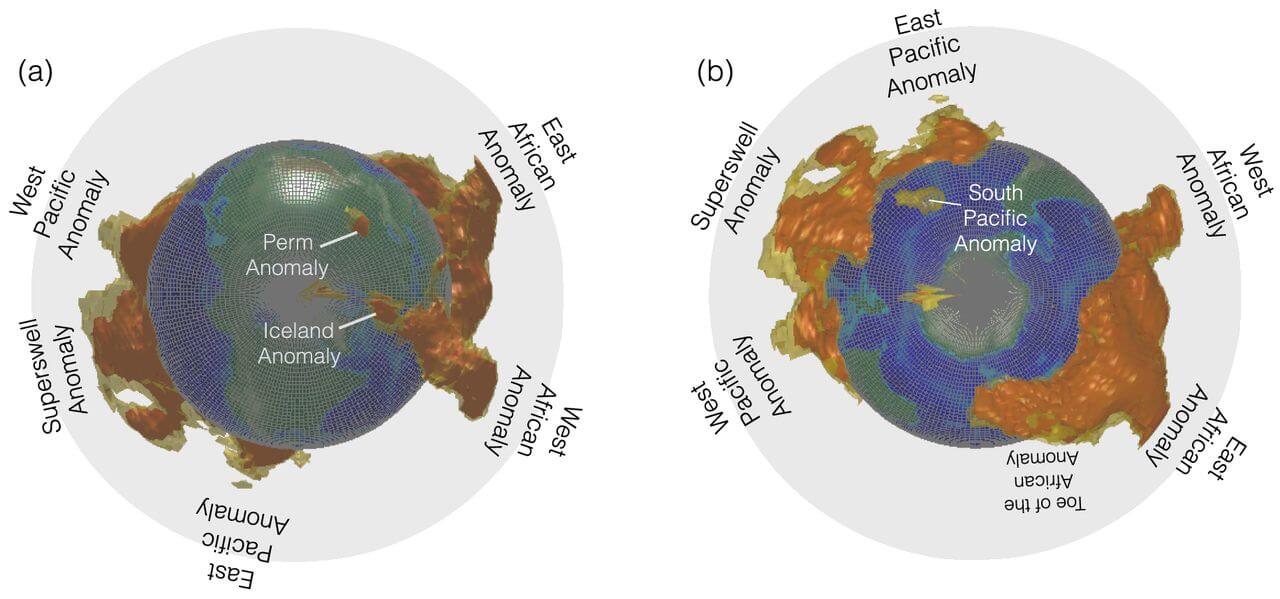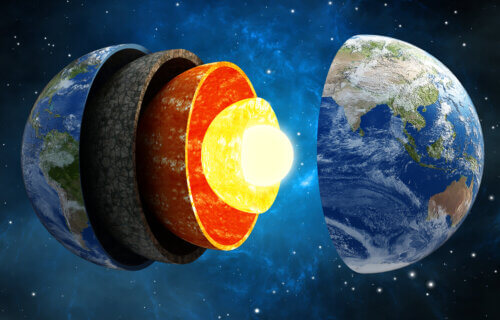PASADENA, Calif. — Earth’s origins in our solar system may have just gotten even more mysterious. Researchers from the California Institute of Technology have revealed their new theory about two massive blobs within the planet’s surface. For decades, scientists have debated what these formations are. Now, the Caltech team has arrived at one conclusion — the remains of an ancient and forgotten planet are hiding at the center of our world.
In the 1980s, scientists were taken aback when they discovered these two massive blobs deep within the Earth, each larger than the size of the Moon. These blobs, one situated beneath the African continent and the other beneath the Pacific Ocean, showcased unusual characteristics when compared to their surroundings. Known as large low-velocity provinces (LLVPs), these structures puzzled researchers studying the Earth, its origins, and its inner workings.
The new study, published in the journal Nature, proposes a fascinating theory: these blobs are remnants of a planet that collided with Earth billions of years ago. This colossal impact is believed to be the same event that resulted in the creation of our Moon.
To understand this better, it’s important to know that seismic waves, which are waves of energy that travel through the Earth, behave differently when they encounter different materials. In the 1980s, researchers observed that seismic waves were slowing down significantly when passing through certain areas deep within the Earth’s mantle, leading to the discovery of the LLVPs. These regions are thought to contain a higher proportion of iron, making them denser and causing the slowdown of seismic waves.

Dr. Qian Yuan, a geophysicist and the lead researcher of this study, recalls a moment of revelation during a seminar in 2019. The seminar, presented by Professor Mikhail Zolotov from Arizona State University, discussed the giant-impact hypothesis — a theory suggesting that the Moon was formed following a massive collision between Earth and a smaller planet named Theia. However, no trace of Theia had ever been found, until Yuan connected the dots.
“Right after Mikhail had said that no one knows where the impactor is now, I had a ‘eureka moment’ and realized that the iron-rich impactor could have transformed into mantle blobs,” says Yuan in a university release.
Through extensive modeling and simulations, the research team was able to confirm that the collision could have resulted in the creation of both the Moon and the LLVPs. Some of Theia’s mantle would have merged with Earth’s, eventually forming the two distinct blobs we observe today. The rest of the debris from the collision came together to form the Moon.

A question that naturally arises is: why did Theia’s material form into two distinct blobs instead of mixing uniformly with Earth’s mantle? The simulations conducted by the researchers revealed that a significant portion of the energy from the collision remained in the upper half of the mantle. This left the lower mantle relatively cooler, allowing the iron-rich material from Theia to stay largely intact and settle at the base of the mantle, much like the blobs in a lava lamp.
“A logical consequence of the idea that the LLVPs are remnants of Theia is that they are very ancient,” says Dr. Paul Asimow, one of the co-directors of the study. “It makes sense, therefore, to investigate next what consequences they had for Earth’s earliest evolution, such as the onset of subduction before conditions were suitable for modern-style plate tectonics, the formation of the first continents, and the origin of the very oldest surviving terrestrial minerals.”
You might also be interested in:
- A priceless layer of diamonds may be hiding near the Earth’s core!
- Mysterious, hidden layer of Earth’s core discovered by scientists
- Ancient diamonds from 650 million years ago reveal hidden chapter in Earth’s evolution

Lea la versión en español en EstudioRevela.com: Restos de un antiguo planeta encontrados ocultos dentro de la Tierra.
